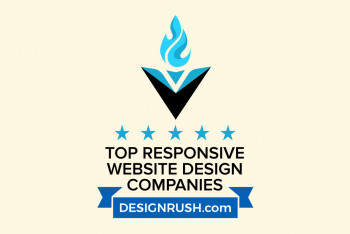Discover the essentials of a UX design framework. Learn how to build, implement, and maintain a framework to enhance user experience and project success.
Introduction to UX Design Frameworks
A UX design framework is a structured approach to creating and improving user experiences. By organising and standardising the design process, a UX design framework ensures that every aspect of a product's user interface is thoughtfully crafted and consistently applied. This helps in delivering a seamless and intuitive user experience that meets both user needs and business goals.
Why a UX Design Framework is Essential
Implementing a UX design framework is essential for several reasons. It provides a clear roadmap for the design process, ensuring that all team members are aligned and working towards the same objectives. A framework also helps in maintaining consistency across different parts of the product, which is crucial for creating a cohesive user experience. Moreover, it allows for the efficient use of resources by streamlining the design process and reducing redundancies.
Core Components of a UX Design Framework
A comprehensive UX design framework typically includes several core components:
- User Research: Understanding the needs, behaviours, and motivations of the users.
- Information Architecture(external link): Organising and structuring information in a way that makes it easy to find and understand.
- Interaction Design: Designing interactive elements that facilitate user engagement and navigation.
- Visual Design: Creating the visual elements of the interface, including typography, colour schemes, and imagery.
- Usability Testing: Evaluating the product with real users to identify issues and areas for improvement.
Steps to Develop a UX Design Framework
Developing a UX design framework involves several steps:
- Define Objectives: Start by defining the objectives and goals of the framework.
- Conduct User Research: Gather insights about your users through interviews, surveys, and observations.
- Create Personas(external link): Develop user personas to represent different user types.
- Design Information Architecture: Organise content and design the navigation structure.
- Develop Wireframes and Prototypes: Create wireframes and interactive prototypes to visualise the design.
- Conduct Usability Testing: Test the prototypes with real users and gather feedback.
- Iterate and Improve: Use the feedback to refine the design and make necessary improvements.
Popular UX Design Frameworks: A Comparison
There are several popular UX design frameworks, each with its own strengths and weaknesses:
- Design Thinking: Focuses on understanding the user's needs and creating innovative solutions.
- Lean UX: Emphasises rapid prototyping and iterative testing to quickly validate ideas.
- Agile UX: Integrates UX design into the agile development process, ensuring continuous collaboration and improvement.
How to Choose the Right UX Design Framework
Choosing the right UX design framework depends on several factors, including the nature of the project, the team’s expertise, and the organisation’s goals. Consider the following when selecting a framework:
- Project Scope: Determine the complexity and scope of the project.
- Team Size and Skills: Assess the skills and experience of the team members.
- Timeline and Budget: Consider the project timeline and budget constraints.
- User Needs: Focus on the specific needs and preferences of the target users.
Implementing a UX Design Framework in Your Project
Implementing a UX design framework in your project involves integrating it into the existing workflow and ensuring that all team members understand and follow the framework. Start by training the team on the chosen framework and its components. Use project management tools to track progress and facilitate collaboration. Regularly review and refine the framework to adapt to changing project needs and user feedback.
Best Practices for Using a UX Design Framework
To get the most out of your UX design framework, follow these best practices:
- Involve Users Early and Often: Engage users throughout the design process to gather valuable insights and feedback.
- Collaborate Across Teams: Foster collaboration between designers, developers, and other stakeholders to ensure alignment and coherence.
- Focus on Usability: Prioritise usability and accessibility to create a product that is easy to use and inclusive.
- Document the Process: Maintain thorough documentation of the design process to ensure consistency and facilitate future improvements.

Challenges and Solutions in UX Design Frameworks
Implementing a UX design framework can present several challenges, such as resistance to change, limited resources, and conflicting priorities. To overcome these challenges:
- Educate Stakeholders: Explain the benefits of the framework and how it will improve the product.
- Allocate Resources Wisely: Prioritise tasks and allocate resources efficiently to maximise impact.
- Foster a Culture of Collaboration: Encourage open communication and teamwork to align goals and resolve conflicts.
Integrating UX Design Frameworks with Agile Development
Integrating UX design frameworks with agile development involves aligning design activities with agile sprints and iterative cycles. This requires close collaboration between designers and developers, as well as regular user testing and feedback. By integrating UX design with agile, teams can continuously improve the product and adapt to changing user needs and business goals.
Tools and Resources for Building a UX Design Framework
Several tools and resources can help in building and implementing a UX design framework:
- Wireframing Tools: Balsamiq, Sketch, Figma
- Prototyping Tools: InVision, Axure, Adobe XD
- User Research Tools: UserTesting, SurveyMonkey, Optimal Workshop
- Project Management Tools: Jira, Trello, Asana
Measuring Success: Evaluating Your UX Design Framework
Evaluating the success of your UX design framework involves measuring key performance indicators (KPIs) such as user satisfaction, task completion rates, and time on task. Conduct regular usability testing and gather feedback from users to identify areas for improvement. Use analytics tools to track user behaviour and measure the impact of design changes.
Tips for Maintaining and Updating Your UX Design Framework
Maintaining and updating your UX design framework is crucial for its long-term success. Regularly review the framework to ensure it remains relevant and effective. Gather feedback from team members and users to identify areas for improvement. Stay updated on industry trends and best practices to continuously refine the framework.




